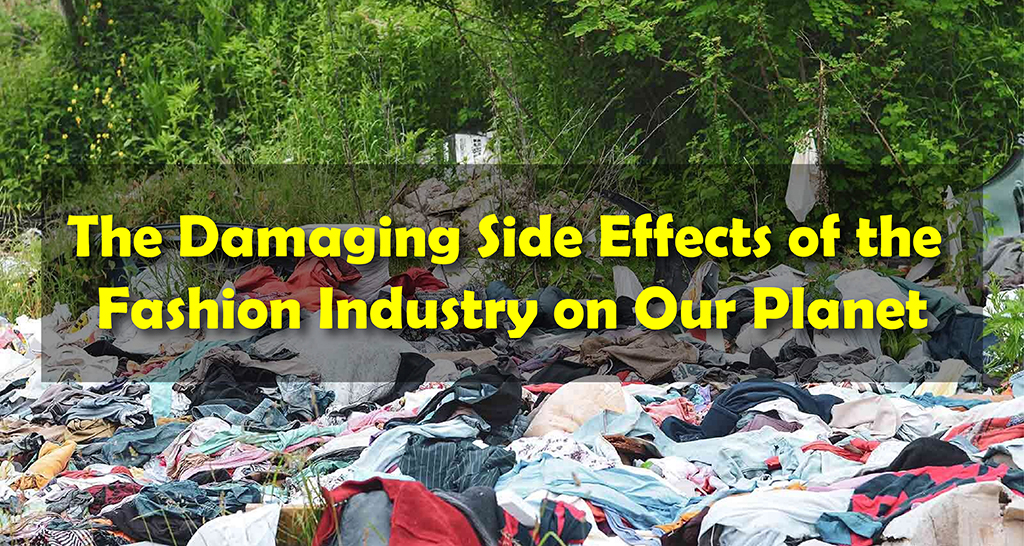The fashion industry, with its glitz and glamor, has caught the attention of the hearts and minds of people around the globe. However, behind the scenes lies a dark side that often goes unnoticed: the damaging side effects on our world. From environmental degradation to social injustice, The fashion industry’s actions have wide-ranging effects that cannot be ignored. The eye-opening documentary “RiverBlue” offers a harsh glimpse into the harmful side effects of the fashion industry on our planet.
Environmental Pollution:
The fashion industry plays a major role in causing environmental pollution. Throughout the production process, harmful chemicals, such as dyes, bleaches, and finishing agents, find their way into water bodies, polluting rivers, lakes, and oceans. Additionally, the production of synthetic fabrics, like polyester, releases microplastics that pose a severe threat to marine life. To reduce the fashion industry’s pollution, we should have strict rules, create eco-friendly options, and encourage sustainable production practices.
Water Scarcity:
Water scarcity is a critical issue in many parts of the world, worsened by the fashion industry’s water-intensive practices. From crop irrigation for textile production to dyeing and finishing processes, billions of gallons of water are consumed each year. As water sources are depleted, local communities and ecosystems suffer. The fashion industry needs to prioritize water conservation measures, adopt innovative technologies, and invest in sustainable water management practices.
Deforestation:
The fashion industry’s dependence on natural fibers, such as cotton and viscose, contributes to deforestation on a massive scale. Forests are cleared for cotton plantations and wood pulp for viscose, causing deforestation. This destroys ecosystems and releases stored carbon dioxide, contributing to climate change. To address this, we need sustainable sourcing, regenerative agriculture, and alternative materials in the fashion industry.
The exploitation of Garment Workers:
Garment workers, mainly in developing countries, suffer from exploitation and unfair labor practices. They tolerate long hours, low pay, and dangerous work environments. Fast fashion’s demand for cheap and fast production fuels this exploitation. To make a difference, brands and consumers need to focus on ethical practices, fair wages, and safe working conditions. It’s crucial to protect the rights and well-being of those who contribute to the fashion industry.
Waste and Overconsumption:
The fashion industry’s fast production and consumer desire for cheap and trendy clothes have created a culture of excessive waste and overconsumption. This throwaway mindset leads to massive amounts of clothing being thrown away or burned. To tackle this problem, we need to adopt sustainable fashion practices like recycling and upcycling and promote durable and timeless designs. As consumers, we can make a difference by shopping mindfully, choosing quality over quantity, and supporting brands that prioritize sustainability.
Carbon Footprint and Climate Change:
The fashion industry’s impact on climate change goes beyond pollution. Manufacturing, transportation, and disposal of clothing produce large amounts of greenhouse gas emissions. The energy-intensive processes and long-distance shipping release significant carbon dioxide. The industry also consumes a significant portion of global energy. To address climate change, sustainable energy sources, energy-efficient practices, and innovative solutions like carbon offsetting are crucial. It’s important to reduce reliance on fossil fuels in the fashion industry.
Chemical Waste and Soil Contamination:
The use of toxic chemicals in textile production not only pollutes water bodies but also leads to soil contamination. Pesticides and fertilizers used in cotton farming, for example, can have long-lasting harmful effects on soil health and biodiversity. The accumulation of chemicals in the soil disrupts natural ecosystems, affects crop productivity, and can contaminate the food chain. The fashion industry needs to promote organic farming practices, encourage the use of safer chemicals, and invest in research and development of sustainable and non-toxic materials.
Loss of Cultural Heritage:
The fashion industry’s rapid turnover of trends and designs often leads to the erasure of cultural heritage and traditional craftsmanship. As fast fashion takes center stage, traditional textile techniques and skills are overruled, resulting in the loss of cultural identity and across generations knowledge. Supporting artisans and local communities, preserving traditional craftsmanship, and promoting sustainable fashion collaborations that value cultural diversity are vital steps in preserving our rich heritage.
Lack of Supply Chain Transparency:
The fashion industry struggles with transparency in its global supply chains. Many brands outsource their production to countries with lax labor and environmental regulations, making it difficult to trace the origins of garments and ensure ethical practices. This lack of transparency allows for labor exploitation, unsafe conditions, and environmental abuse. Fashion companies must prioritize supply chain transparency, and responsible sourcing, and collaborate with suppliers to ensure fair wages, safe working conditions, and environmentally sound practices throughout the entire production process.
Consumer Awareness and Education:
To address the negative effects of the fashion industry, consumer behavior needs to change. Many consumers are unaware of the environmental and social impacts of their clothing choices. Raising awareness through education campaigns, documentaries, and sustainable fashion initiatives is crucial. By encouraging conscious consumerism, promoting ethical brands, and advocating for the longevity and value of garments, consumers can contribute to positive change and push the fashion industry toward sustainability.
Conclusion:
The fashion industry’s damaging side effects on our planet are vast and interconnected. From environmental pollution and deforestation to labor exploitation and waste generation, urgent action is needed at every level. Governments, industry leaders, consumers, and advocacy groups must work together to promote sustainable practices, enforce regulations, prioritize transparency, and invest in innovative solutions. By demanding change and making conscious choices, we can create a fashion industry that aligns with the principles of environmental stewardship, social responsibility, and cultural preservation. Only through collective effort can we forge a path toward a more sustainable and equitable fashion future.

